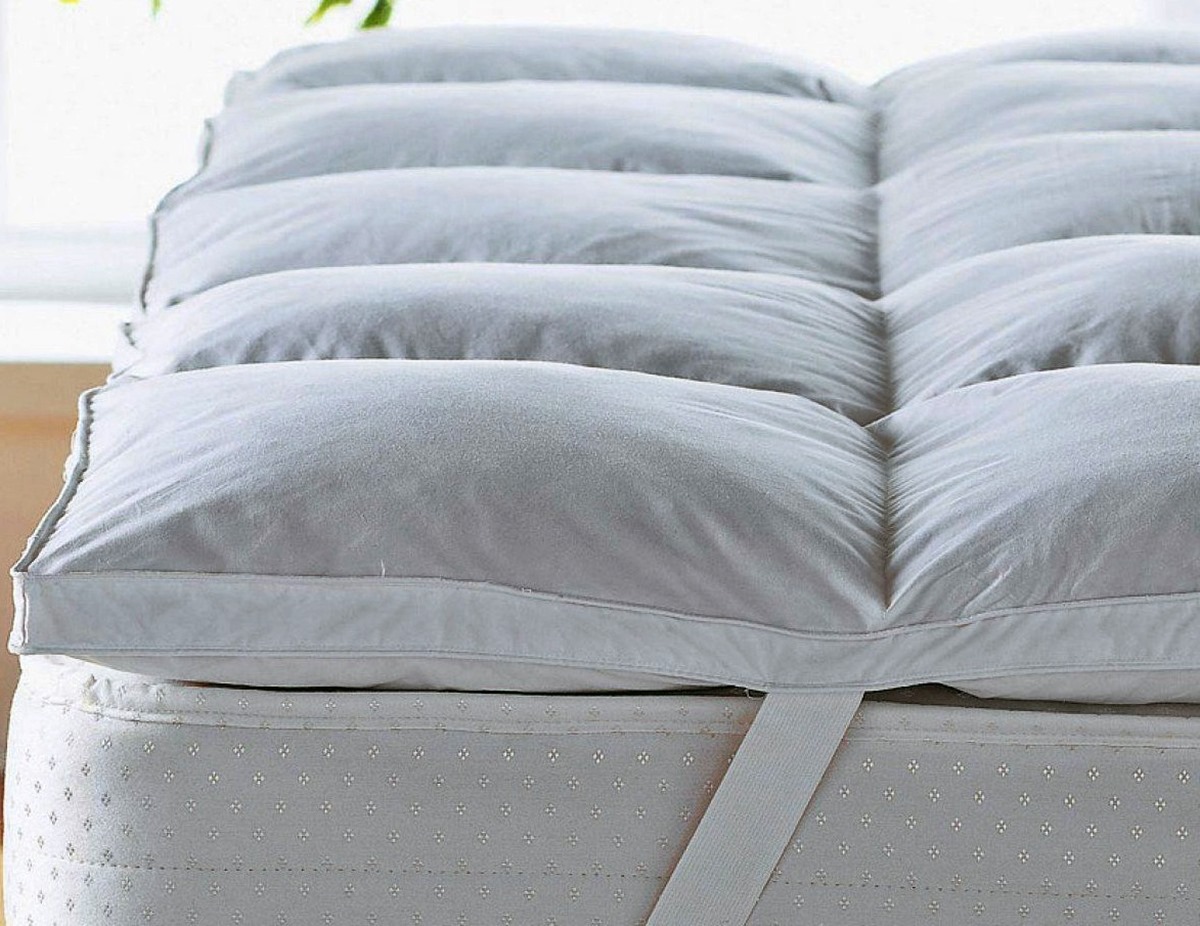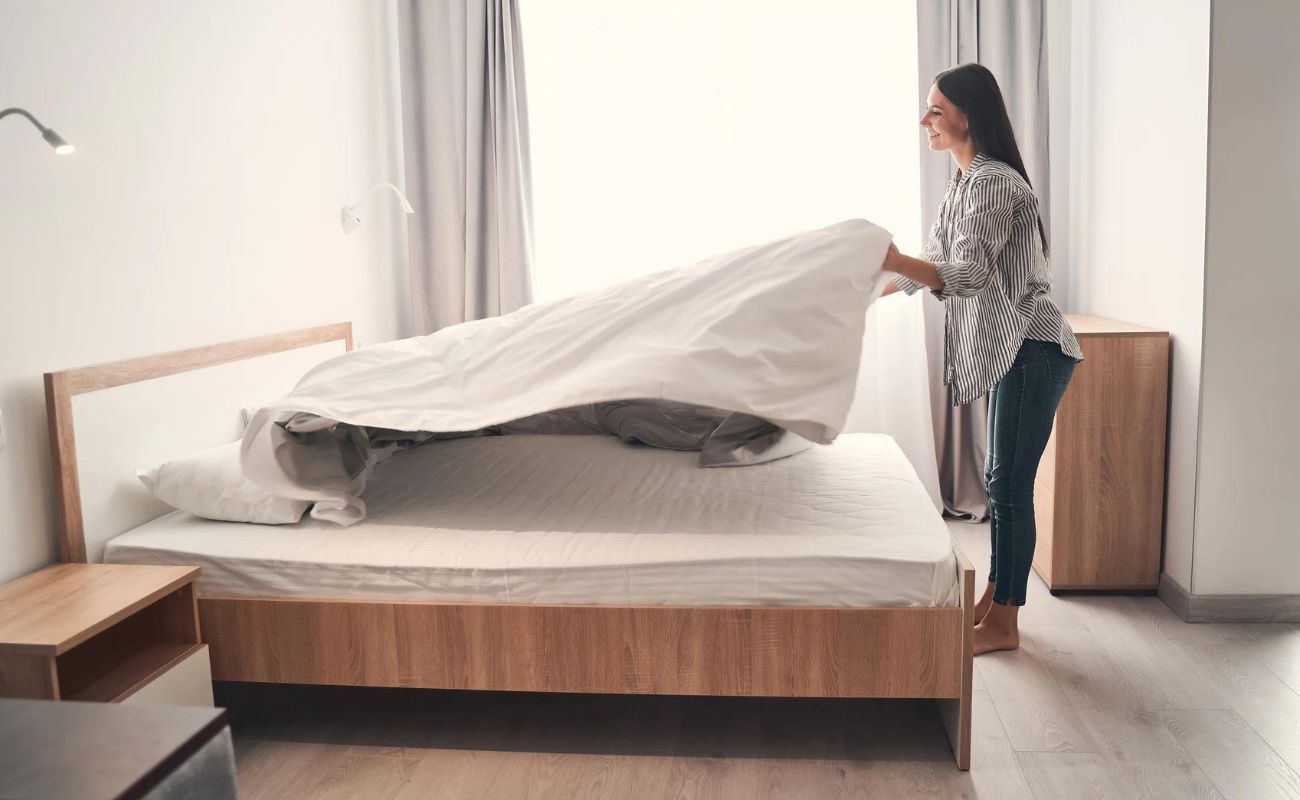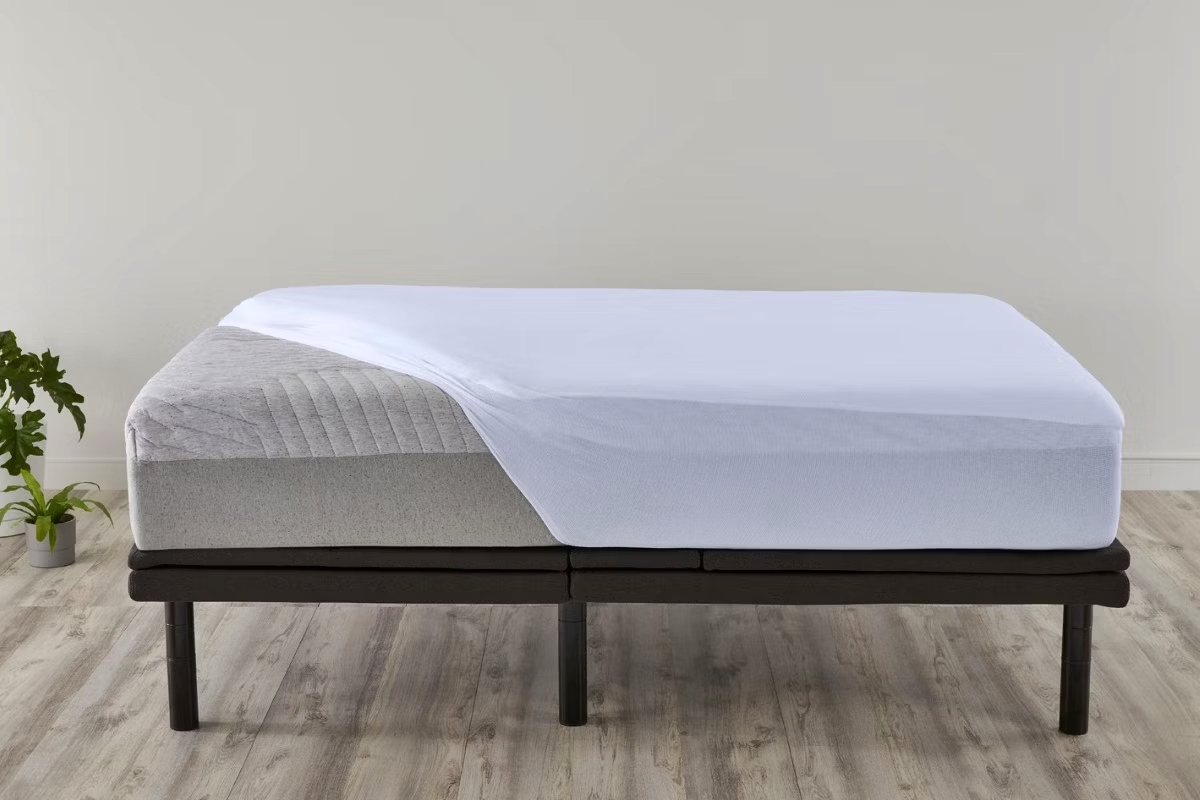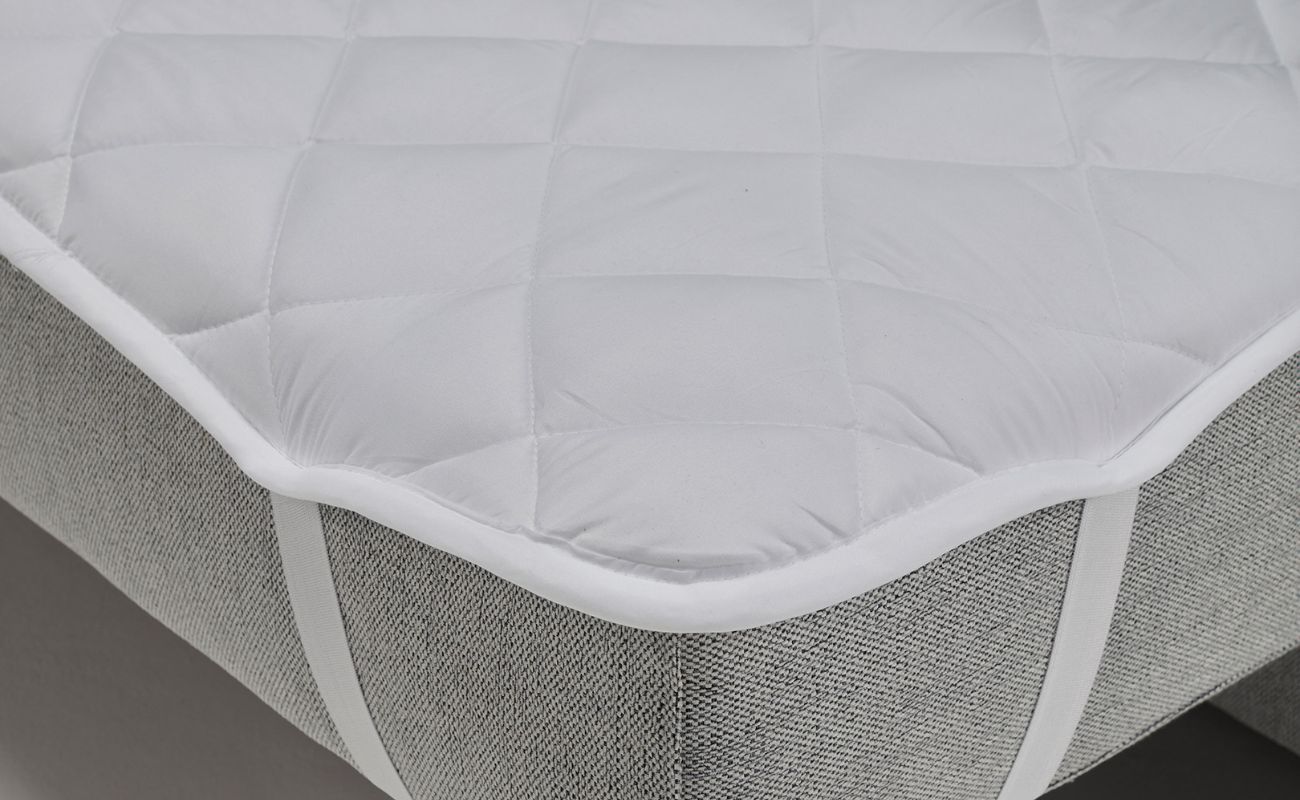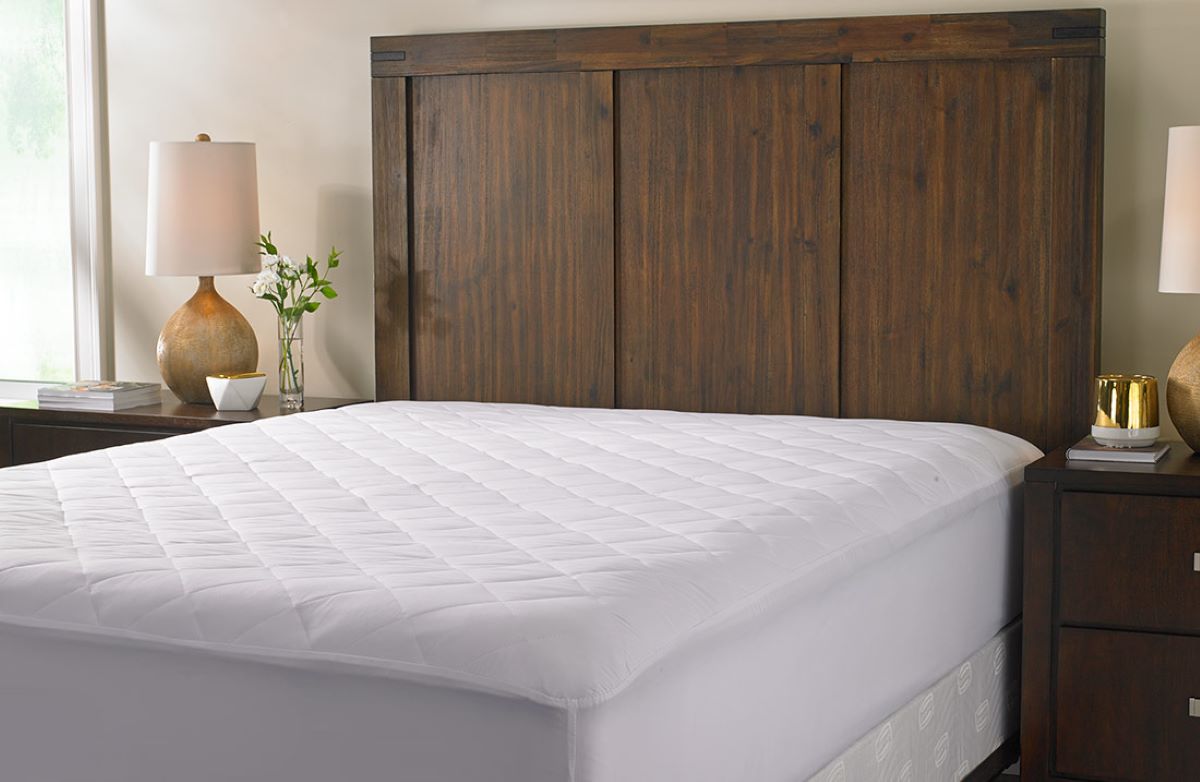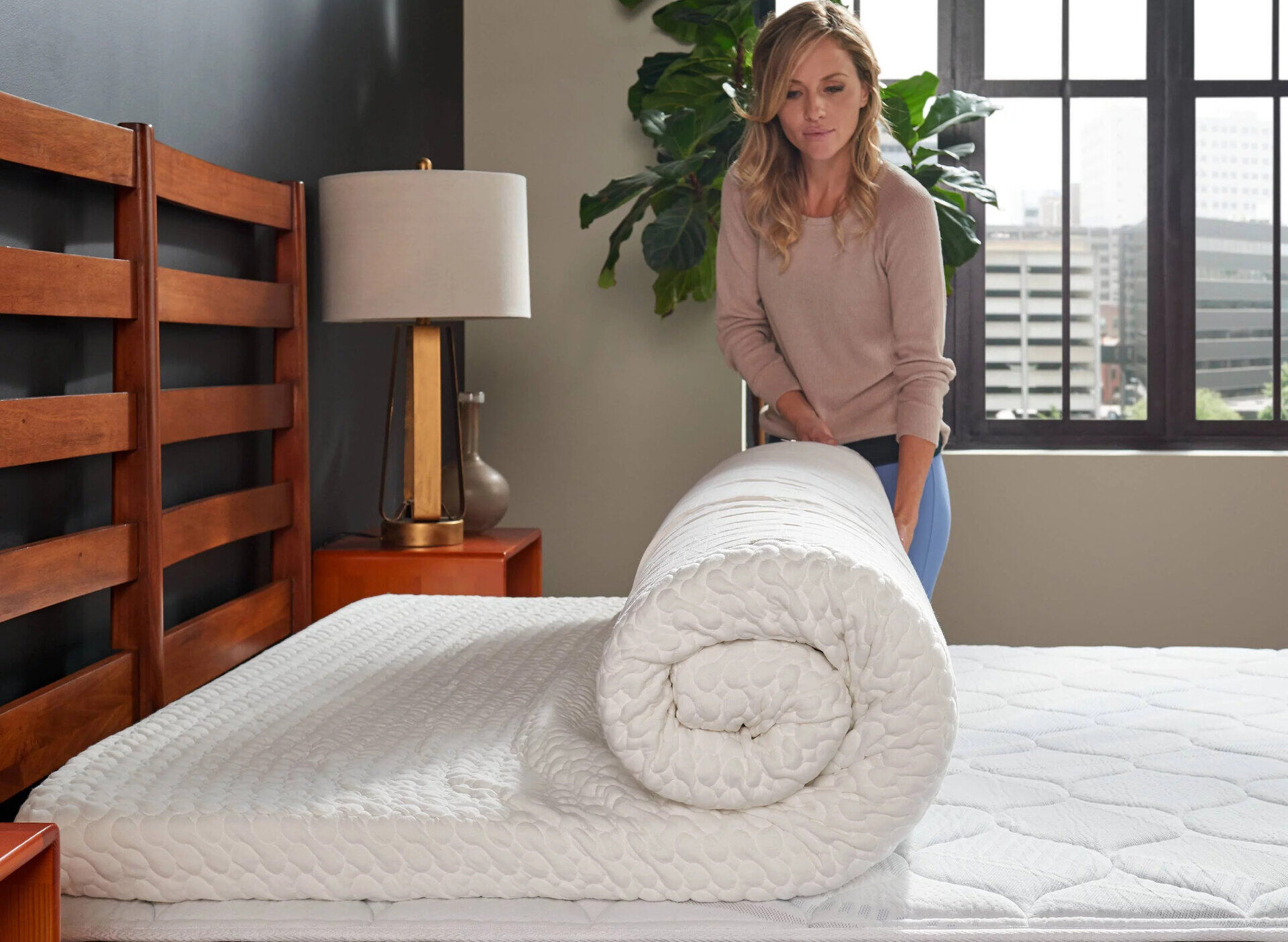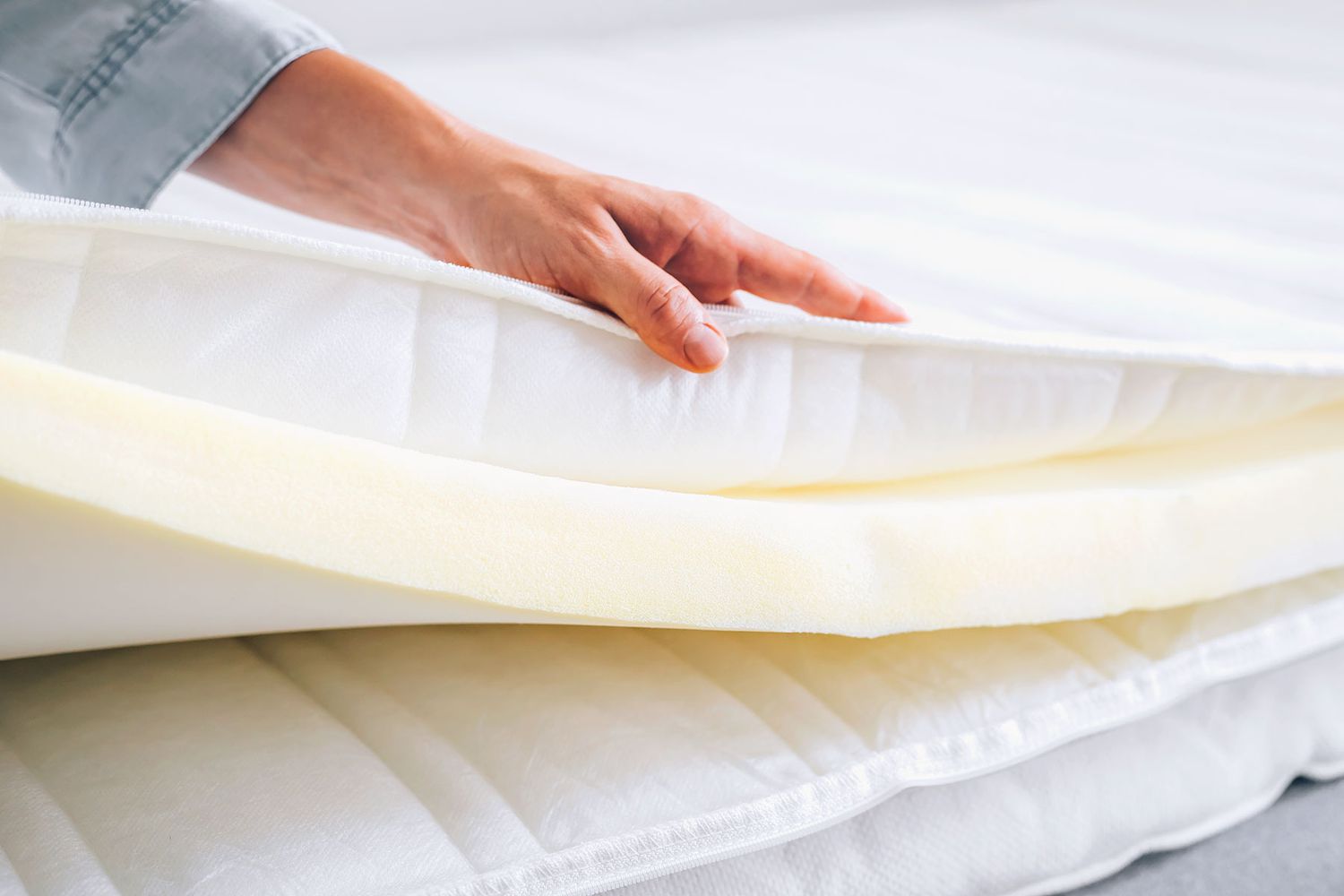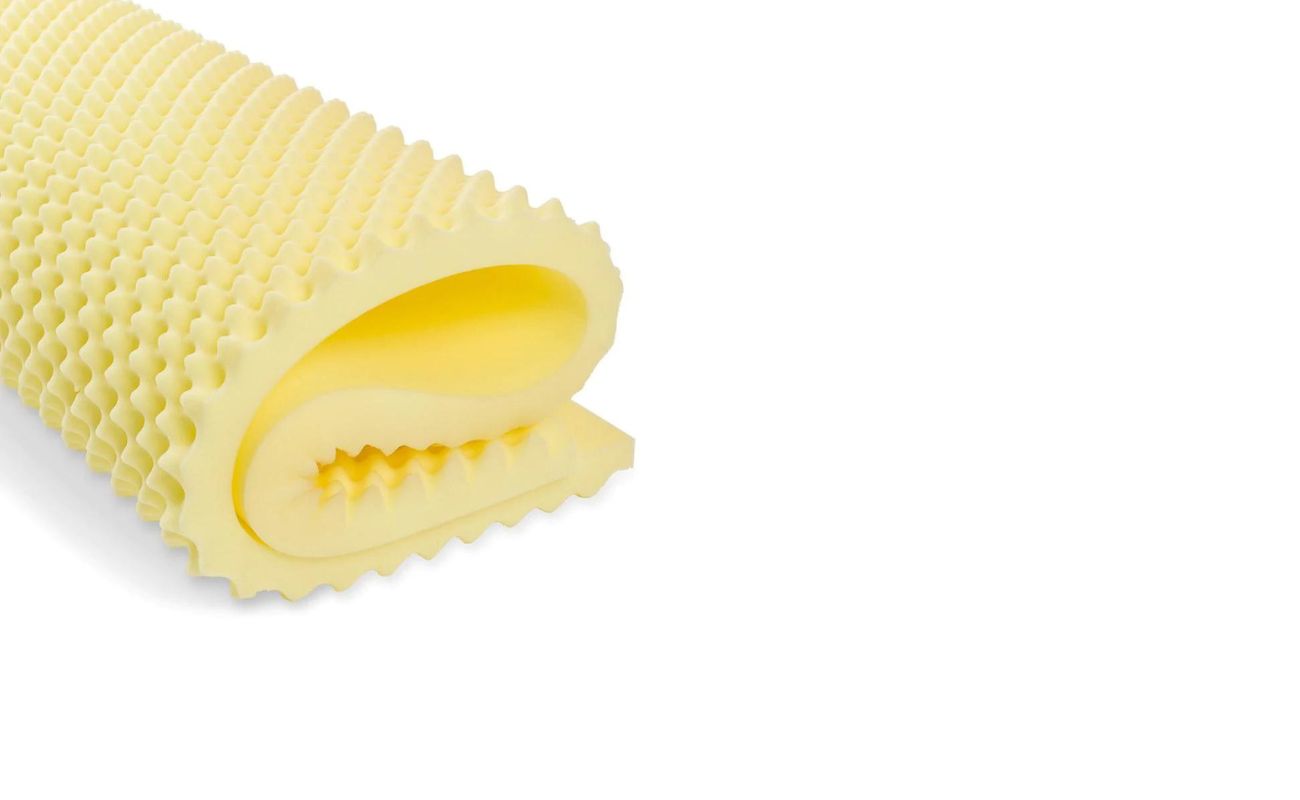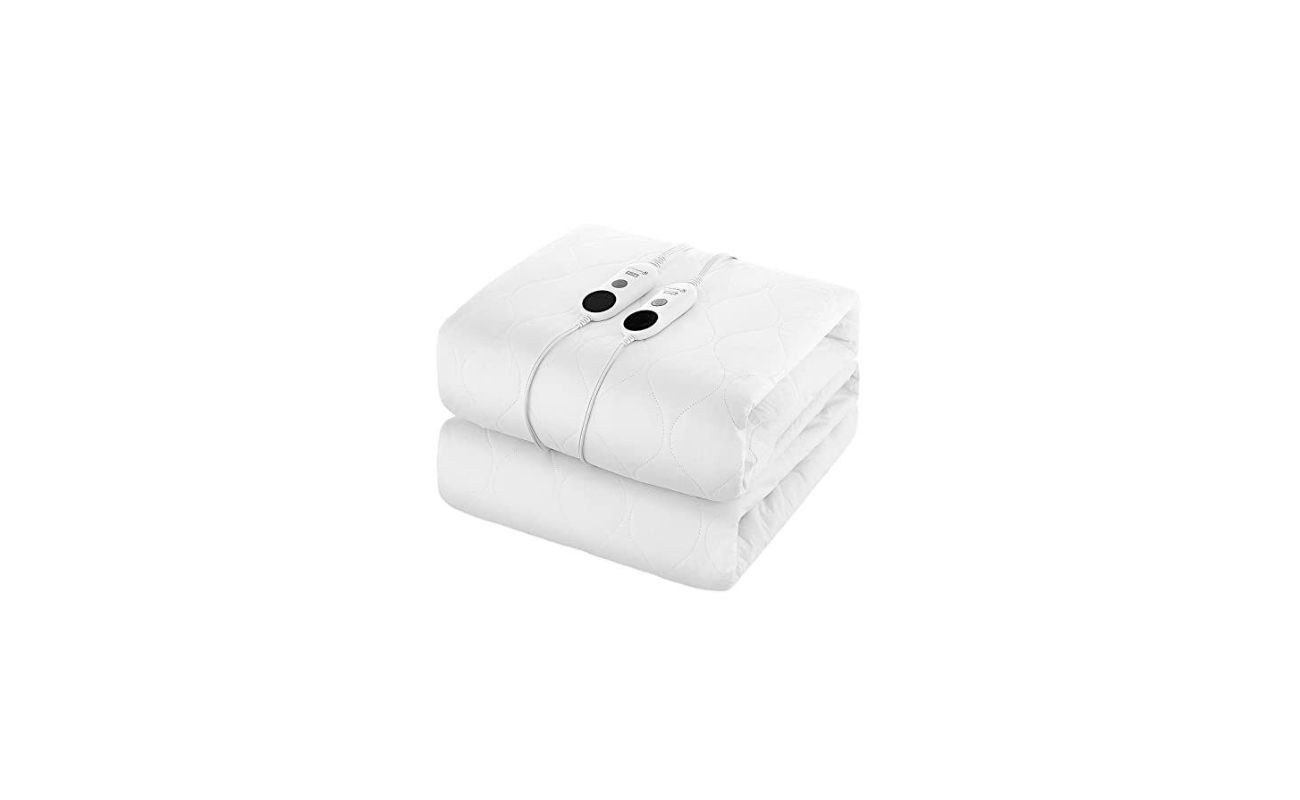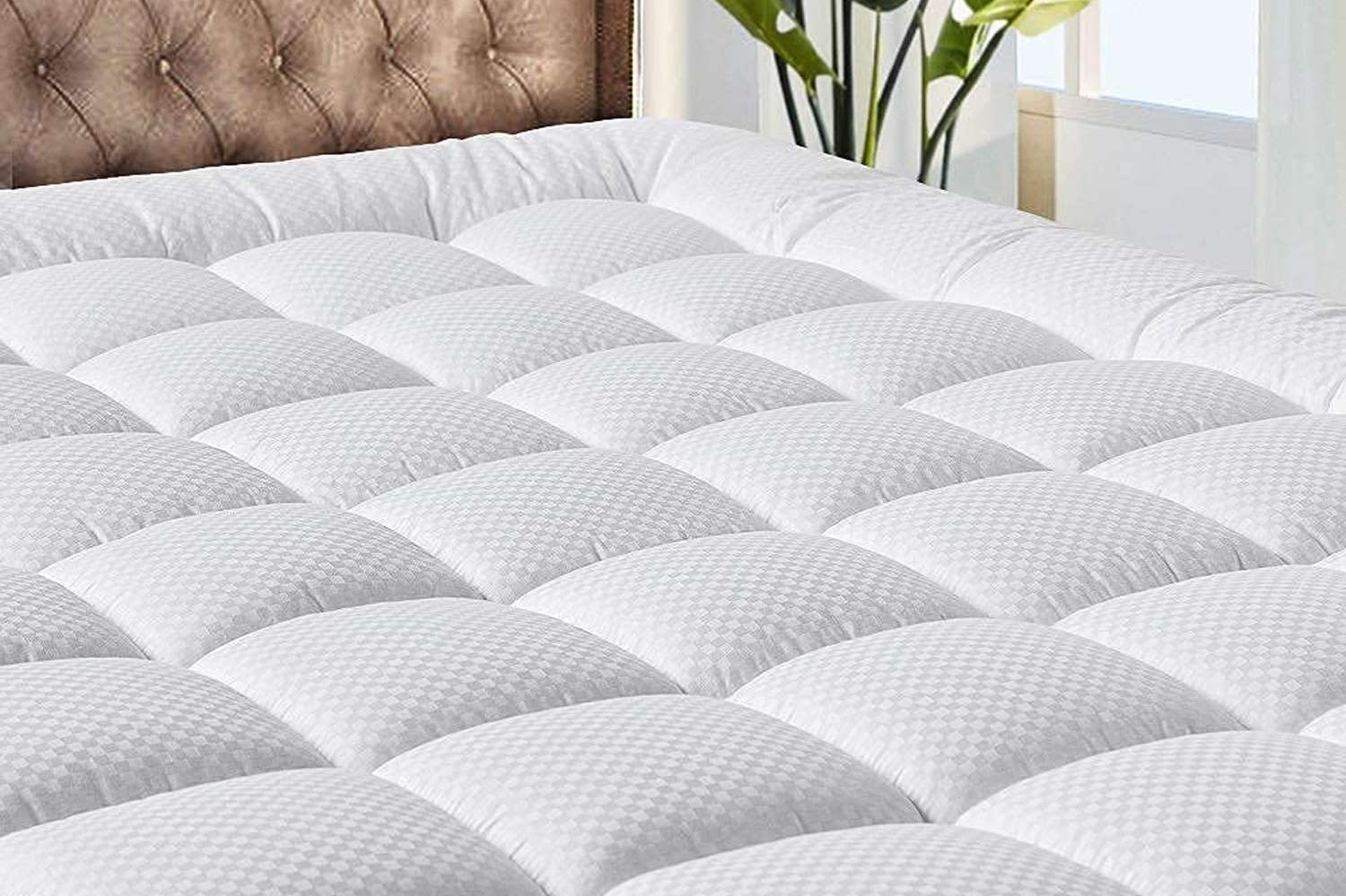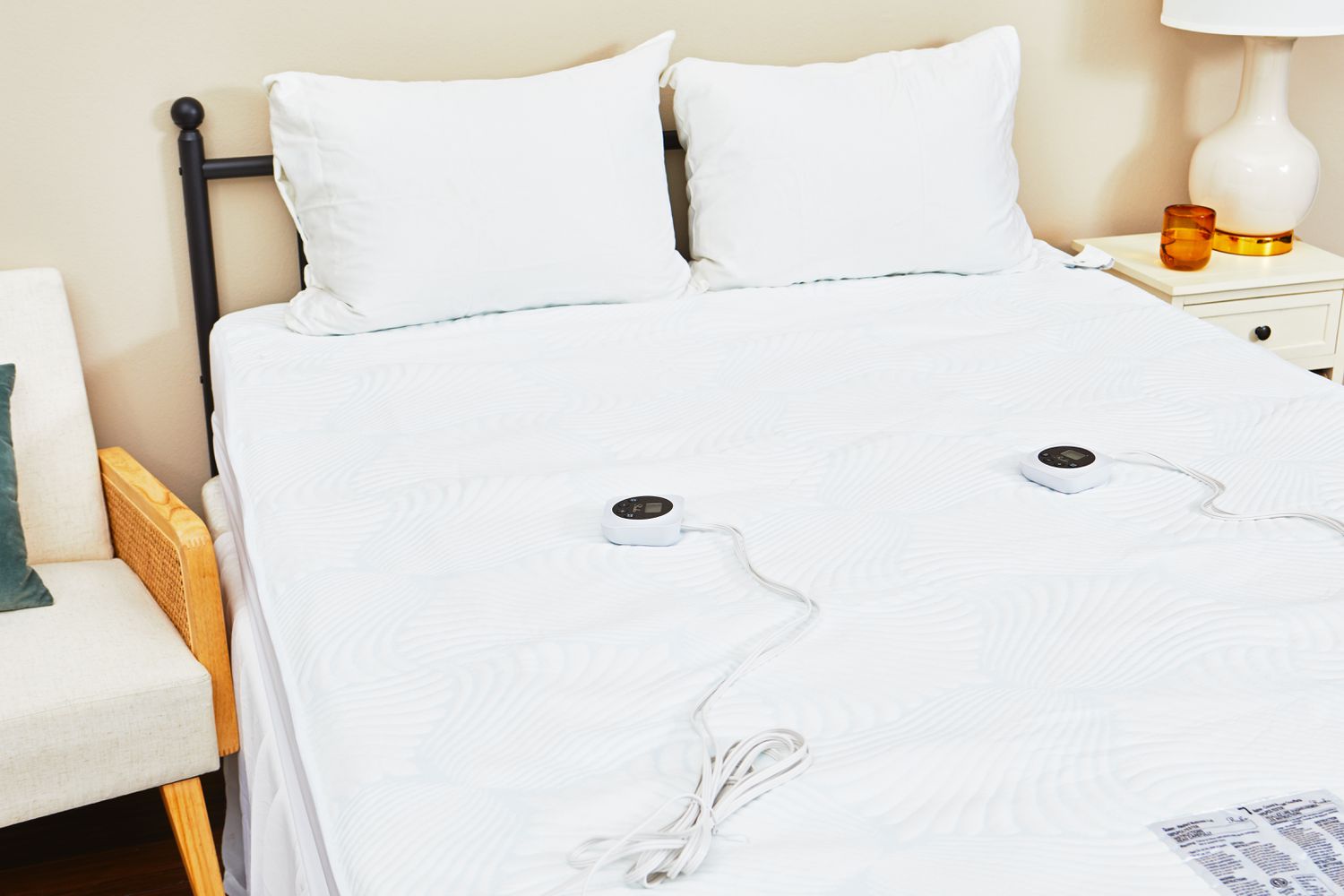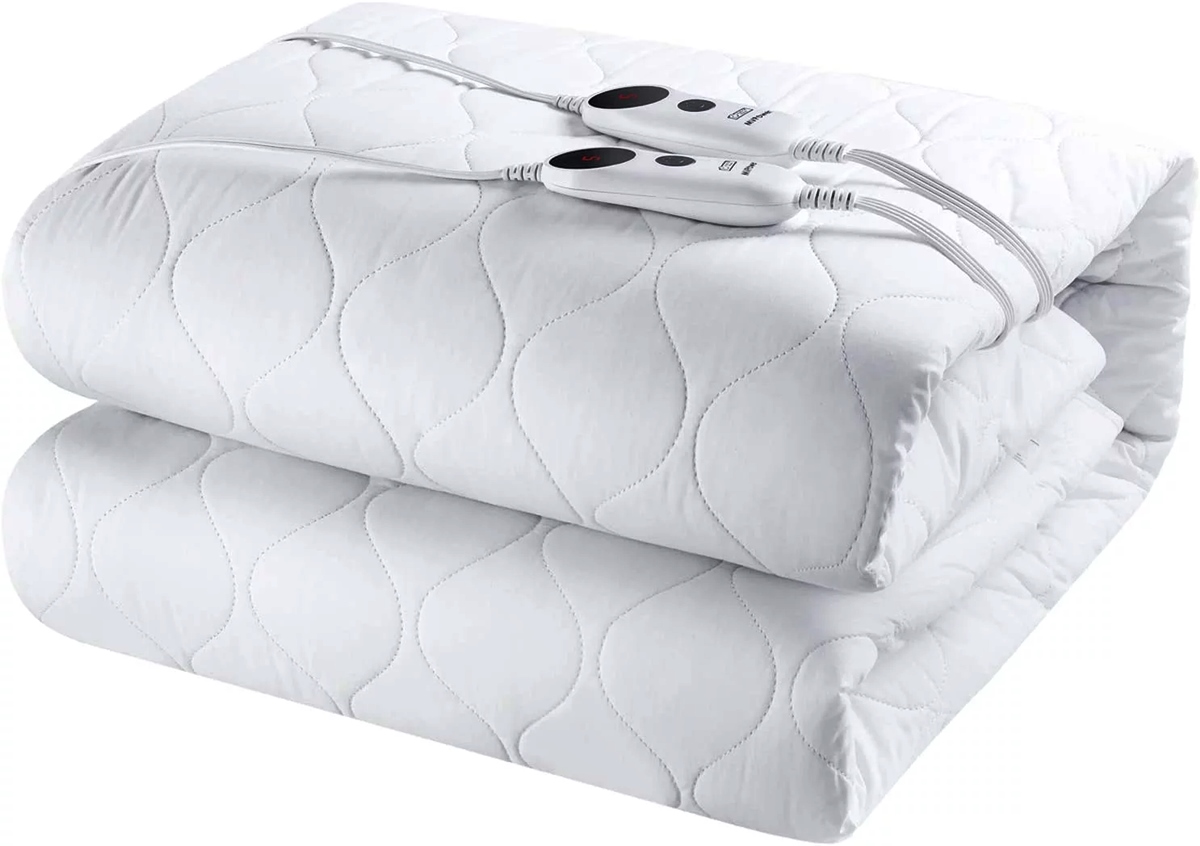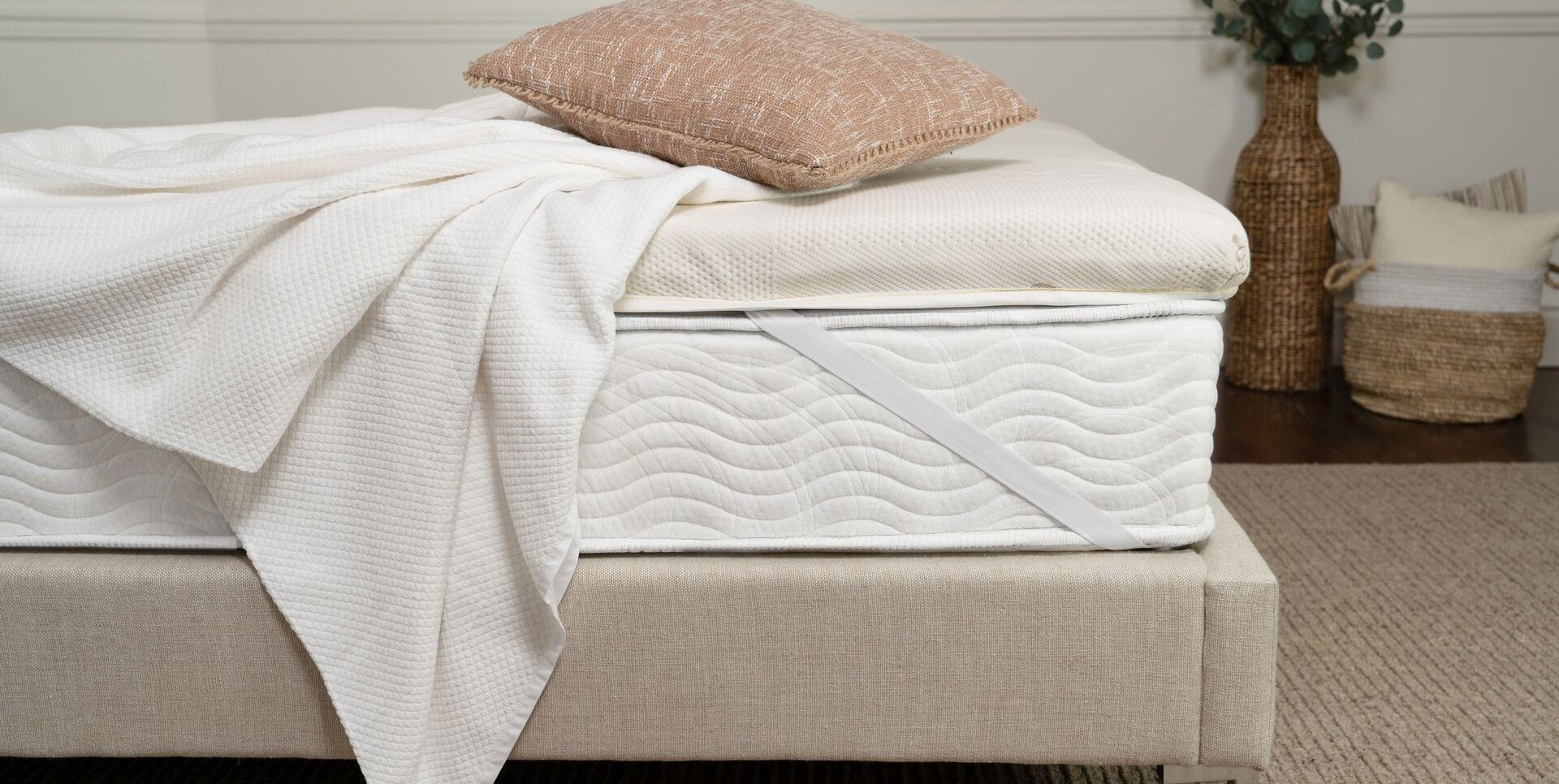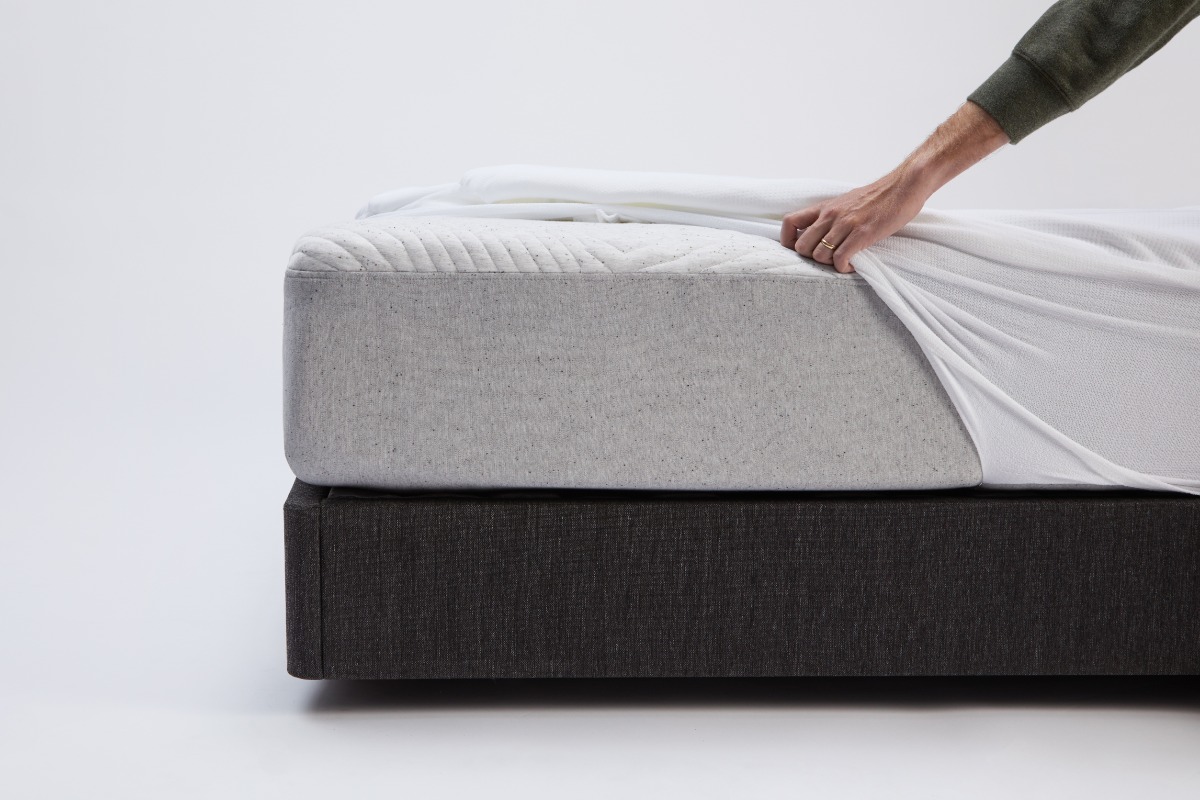Home>Furniture>Bedroom Furniture>What Does A Mattress Pad Do
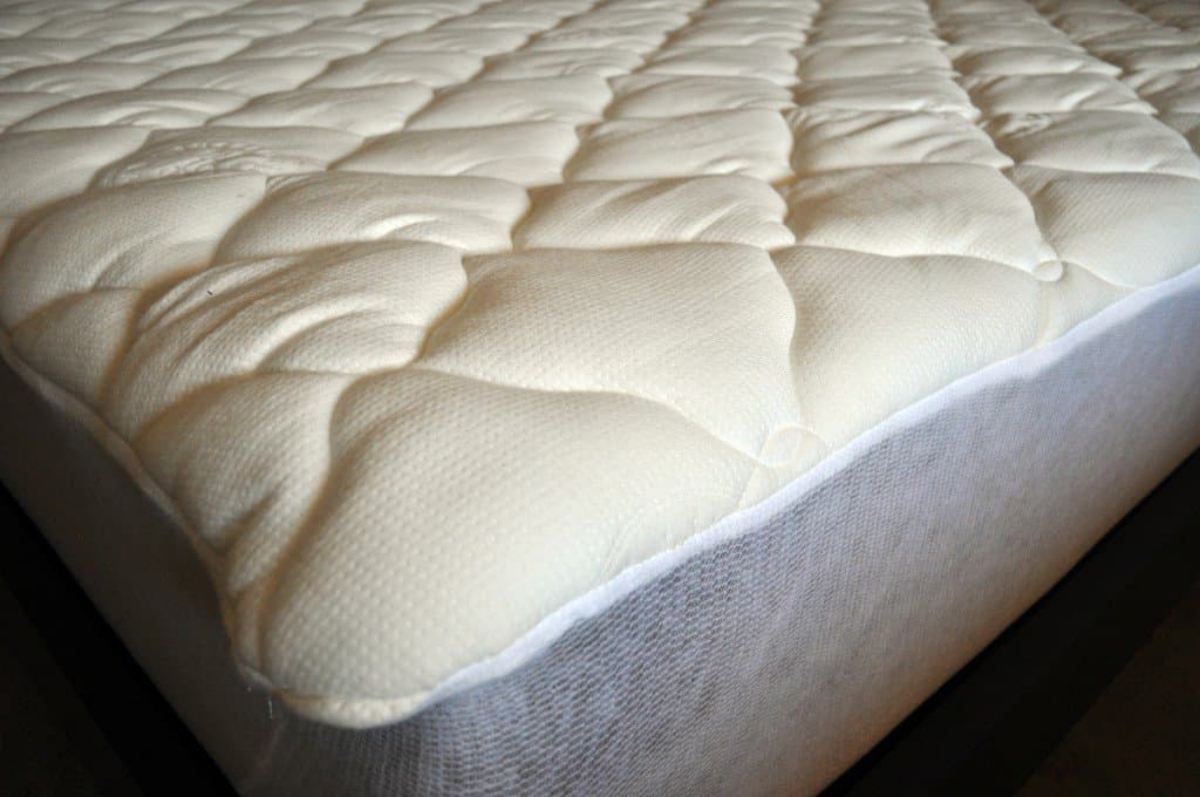

Bedroom Furniture
What Does A Mattress Pad Do
Modified: January 9, 2024
"Discover the benefits of using a mattress pad in your bedroom furniture setup. Enhance your comfort and protect your mattress with our high-quality mattress pads."
(Many of the links in this article redirect to a specific reviewed product. Your purchase of these products through affiliate links helps to generate commission for Storables.com, at no extra cost. Learn more)
Introduction
Welcome to the world of bedroom furniture, where every piece plays a vital role in creating a comfortable and inviting space. Among the various components of a bed, the mattress takes center stage, providing support and comfort for a good night’s sleep. However, to enhance the quality and longevity of your mattress, it’s worth considering an often overlooked accessory: the mattress pad.
What exactly is a mattress pad, and why is it important? In this article, we will explore the definition, purpose, and benefits of using a mattress pad, as well as different types available, factors to consider when choosing one, and how to properly care for it. So, let’s dive in and discover how a simple mattress pad can make a big difference in your bedroom!
Key Takeaways:
- Enhance your sleep experience and protect your mattress investment with a mattress pad, offering comfort, durability, temperature regulation, allergen protection, and easy maintenance.
- Choose from various types of mattress pads to suit your preferences, and follow proper care guidelines to ensure a clean, comfortable, and supportive bed for years to come.
Read more: What Do Mattress Pads Do
Definition of a Mattress Pad
A mattress pad, also known as a mattress topper, is a removable layer of cushioning material that is placed on top of a mattress. It is designed to provide an additional layer of comfort, protection, and support to the mattress, enhancing its overall functionality and durability.
Mattress pads come in various thicknesses and materials, including foam, down, wool, cotton, and polyester. They are typically held in place by elastic straps or fitted corners, ensuring a snug fit and preventing slippage during sleep.
Unlike a mattress protector, which primarily focuses on keeping the mattress clean and free from spills, stains, and allergens, a mattress pad offers additional padding and a more luxurious feel. It acts as a barrier between the sleeper and the mattress, creating a soft and cushioned surface to sleep on.
It’s important to note that a mattress pad should not be confused with a mattress topper. While they share some similarities, mattress toppers are usually thicker and primarily designed to alter the firmness or feel of the mattress. In contrast, mattress pads are thinner and focus more on providing comfort and protection.
Now that we have a clear understanding of what a mattress pad is, let’s explore its purpose and the benefits it offers.
The Purpose of a Mattress Pad
The primary purpose of a mattress pad is to enhance the overall comfort level and extend the lifespan of your mattress. It offers several benefits that can greatly improve your sleeping experience.
1. Comfort: A mattress pad adds an extra layer of cushioning, providing a softer and more cozy surface to sleep on. Whether your mattress is too firm or lacks sufficient support, a mattress pad can help alleviate discomfort by adding an extra level of plushness. It can also help to alleviate pressure points, ensuring a more restful and comfortable sleep.
2. Protection: Mattress pads act as a shield, protecting your mattress from spills, stains, and allergens. They create a barrier that prevents liquids, sweat, and oils from seeping into the mattress and causing damage, ultimately prolonging the life of your mattress. In addition, mattress pads can help minimize the risk of bed bugs and dust mites, providing a hygienic sleeping environment.
3. Temperature Regulation: Some mattress pads are designed with cooling properties to regulate your body temperature while you sleep. They are made from breathable materials that allow air circulation, wicking away moisture and heat. This can be particularly beneficial for those who tend to sleep hot or live in warmer climates.
4. Noise Reduction: If your mattress tends to make squeaky or creaking noises, a mattress pad can help reduce the noise level. It acts as a buffer between you and the mattress, absorbing the movements and minimizing any disruptive sounds.
5. Easy Maintenance: Mattress pads are easy to remove and clean, making them a convenient solution for keeping your bed fresh and hygienic. Most mattress pads are machine washable, allowing for regular cleaning and eliminating the need for deep cleaning or mattress replacements.
Overall, a mattress pad serves as a versatile accessory that improves the overall functionality and comfort of your mattress. It offers an additional layer of cushioning, protects against spills and allergens, regulates temperature, reduces noise, and simplifies maintenance.
Now that we understand the purpose of a mattress pad, let’s delve into the different types available to suit specific needs and preferences.
Benefits of Using a Mattress Pad
Using a mattress pad can offer a multitude of benefits that enhance the quality of your sleep and the overall longevity of your mattress. Let’s explore some of the key advantages of incorporating a mattress pad into your bedding setup:
1. Enhanced Comfort: One of the primary benefits of using a mattress pad is the added comfort it provides. The extra layer of cushioning can help alleviate pressure points and create a softer sleeping surface, promoting a more restful and comfortable sleep experience.
2. Improved Durability: Mattresses can be a significant investment, and using a mattress pad can help prolong their lifespan. The padding of the mattress pad acts as a barrier, preventing direct wear and tear on the mattress. It helps to protect against stains, spills, and damage, preserving the mattress’s integrity for longer.
3. Temperature Regulation: Many mattress pads are designed with temperature-regulating properties. They can help wick away moisture and heat, keeping you cool and comfortable throughout the night. This is especially beneficial for individuals who experience night sweats or sleep hot.
4. Allergen Protection: Mattress pads with hypoallergenic materials act as a barrier against common allergens such as dust mites, pet dander, and pollen. This can be highly beneficial for individuals with allergies or asthma, providing a cleaner and healthier sleep environment.
5. Noise Reduction: If your mattress tends to make noises when you move, a mattress pad can serve as a buffer, reducing the noise and creating a quieter sleeping experience. This can be particularly useful for light sleepers or individuals sharing a bed.
6. Easy Maintenance: Cleaning a mattress pad is much easier than cleaning a mattress itself. Most mattress pads are machine washable, allowing for effortless maintenance and greater hygiene. Regular washing helps keep the mattress pad fresh and free from dirt, sweat, and odors.
7. Versatility: Mattress pads come in various thicknesses and materials, allowing you to customize your sleeping surface. Whether you prefer a plush feel, extra support, or cooling properties, there is a mattress pad to suit your specific needs and preferences.
8. Cost-Effective Solution: Investing in a high-quality mattress pad can be a cost-effective alternative to purchasing a new mattress. It can provide similar benefits of comfort and protection without the hefty price tag.
By using a mattress pad, you can improve the overall comfort of your sleep, extend the life of your mattress, regulate temperature, protect against allergens, reduce noise, simplify maintenance, and save money.
Now that we understand the benefits of using a mattress pad, let’s explore the different types available in the market.
A mattress pad provides an extra layer of comfort and protection for your mattress. It can help to extend the life of your mattress, provide additional cushioning, and protect against spills and stains.
Different Types of Mattress Pads
When it comes to choosing a mattress pad, there are various options available to suit different preferences and needs. Here are some of the common types of mattress pads:
1. Memory Foam Mattress Pads: Memory foam mattress pads provide excellent pressure relief and contouring support. They conform to the body’s shape, relieving pressure points and promoting spinal alignment. Memory foam pads also absorb motion, making them a great choice for couples or restless sleepers.
2. Down Mattress Pads: Down mattress pads are filled with soft and fluffy down feathers, typically from ducks or geese. They provide a plush and luxurious feel, offering superior comfort and insulation. Down mattress pads are lightweight and breathable, allowing for better airflow and temperature regulation.
3. Wool Mattress Pads: Wool mattress pads are known for their natural warmth and moisture-wicking properties. They provide excellent temperature regulation, keeping you cool in summer and warm in winter. Wool is also naturally hypoallergenic and resistant to dust mites, making it a great choice for allergy sufferers.
4. Cotton Mattress Pads: Cotton mattress pads are lightweight, breathable, and highly absorbent. They provide a cool and comfortable sleeping surface while offering some added softness and protection to the mattress. Cotton pads are easy to care for and often machine washable.
5. Polyester Mattress Pads: Polyester mattress pads are affordable, durable, and easy to maintain. They offer a soft and cushioned surface, providing added comfort and protection to the mattress. Polyester pads are resistant to wrinkles, shrinking, and fading, making them a practical choice for everyday use.
6. Cooling Mattress Pads: Cooling mattress pads are designed with advanced temperature-regulating technology to keep you cool throughout the night. They often feature materials like gel-infused memory foam or phase-change materials that absorb and dissipate body heat, ensuring a comfortable sleep environment even on hot summer nights.
7. Waterproof Mattress Pads: Waterproof mattress pads are ideal for individuals who want to protect their mattress from spills, accidents, or incontinence. They are typically made with a waterproof backing that acts as a barrier against liquids, while still offering comfort and breathability.
When choosing a mattress pad, consider factors such as your desired level of comfort, need for temperature regulation, allergies, and budget. It’s also essential to ensure that the mattress pad fits securely on your mattress and is easy to maintain.
Now that we have explored the different types of mattress pads, let’s move on to the factors to consider when choosing the right one for your bed.
Read more: What Does A Mattress Topper Do
Factors to Consider When Choosing a Mattress Pad
Choosing the right mattress pad is essential for maximizing comfort and meeting your specific needs. Here are some factors to consider when selecting a mattress pad:
1. Material: The material of the mattress pad greatly influences its comfort, breathability, and overall feel. Consider your personal preferences and any specific requirements, such as cooling properties or hypoallergenic materials. Common options include memory foam, down, wool, cotton, and polyester.
2. Thickness: The thickness of the mattress pad contributes to its cushioning and support level. Thicker pads offer more plushness, while thinner pads provide a subtle layer of comfort. Consider how much additional padding you need or prefer for your sleep surface.
3. Size and Fit: Make sure to choose the correct size of the mattress pad to ensure a snug and secure fit. It should cover the mattress fully and not slip or shift during sleep. Measure your mattress dimensions accurately before purchasing a mattress pad.
4. Breathability: If you tend to sleep hot or live in a warm climate, consider a mattress pad with good breathability. Look for materials that promote airflow and allow heat to dissipate, such as cotton or cooling gel-infused memory foam.
5. Allergen Resistance: If you have allergies or suffer from respiratory issues, opt for a mattress pad that is hypoallergenic and resistant to common allergens like dust mites. Natural materials like wool or hypoallergenic polyester can be excellent choices for individuals with sensitivities.
6. Easy Maintenance: Consider the ease of cleaning and maintaining the mattress pad. Look for machine-washable options that can be easily removed and washed regularly to keep it fresh and hygienic. Some mattress pads may have specific care instructions, so be sure to check them before purchasing.
7. Price: Set a budget for your mattress pad and consider the overall value it offers. Remember that mattress pads come in a range of prices depending on the material, brand, and features. Look for a balance between quality and affordability that meets your specific requirements.
8. Reviews and Recommendations: Take the time to read reviews and seek recommendations from trusted sources. Other people’s experiences can provide valuable insights into the quality, durability, and performance of different mattress pads.
Keep these factors in mind when choosing a mattress pad to select one that suits your preferences, supports your mattress, and enhances your sleep experience.
Now that we’ve discussed the factors to consider, let’s explore how to properly care for your mattress pad to ensure its longevity and functionality.
How to Properly Care for a Mattress Pad
Caring for your mattress pad is essential to maintain its cleanliness, durability, and functionality. Here are some tips on how to properly care for your mattress pad:
1. Read and Follow Care Instructions: Before cleaning your mattress pad, always refer to the manufacturer’s care instructions. Different materials may have specific cleaning requirements, such as machine-washing, hand-washing, or dry cleaning. Following these instructions will help prevent damage to the pad and ensure its longevity.
2. Regular Washing: It is recommended to wash your mattress pad regularly, ideally every few months or according to the manufacturer’s instructions. This will help remove dirt, sweat, and allergens, keeping it fresh and hygienic. Check if the mattress pad is machine washable and use a gentle cycle with mild detergent.
3. Spot Cleaning: For minor spills or stains, spot cleaning can be a quick and effective solution. Blot the affected area with a mild detergent or stain remover, using a clean cloth or sponge. Avoid rubbing the stain, as this may cause it to spread or set further into the fabric.
4. Dry Completely: Ensure that your mattress pad is completely dry before placing it back on the mattress. Moisture trapped in the pad can lead to mildew or unpleasant odors. If possible, air-dry the mattress pad, or use a low-heat setting in the dryer to avoid shrinking or damaging the material.
5. Protect from Spills and Stains: To minimize the chance of spills or stains reaching the mattress pad, consider using a mattress protector or waterproof cover. These additional layers can provide an extra barrier of protection and keep your mattress pad cleaner for longer.
6. Rotate or Flip: Depending on the design and construction of your mattress pad, it may be beneficial to rotate or flip it occasionally. This will help distribute the wear evenly and prolong its lifespan.
7. Vacuum: Regularly vacuum your mattress pad to remove dust, dirt, and allergens that may accumulate over time. Use a handheld or upholstery attachment to gently remove debris from the surface of the pad. This will help maintain a cleaner and more allergen-free sleeping environment.
8. Store Properly: If you need to store your mattress pad for an extended period, make sure it is clean and completely dry. Fold and store it in a cool, dry place to prevent moisture or mildew growth. Avoid exposing it to direct sunlight or extreme temperatures.
By following these care tips, you can keep your mattress pad clean, fresh, and in good condition for an extended period. Proper care not only ensures its longevity but also contributes to a healthier sleep environment.
Now that we have covered how to care for a mattress pad, let’s summarize the key points of this article.
Conclusion
A mattress pad may seem like a small and insignificant addition to your bed, but its benefits can greatly enhance your sleeping experience and protect your mattress investment. By adding an extra layer of comfort, protection, and support, a mattress pad improves the overall functionality and longevity of your mattress.
We have explored the definition of a mattress pad and its purpose in providing additional cushioning and protection to your mattress. The benefits of using a mattress pad include enhanced comfort, improved durability, temperature regulation, allergen protection, noise reduction, easy maintenance, versatility, and cost-effectiveness.
We have also discussed the different types of mattress pads available, such as memory foam, down, wool, cotton, polyester, cooling, and waterproof pads. Considering factors such as material, thickness, size, breathability, allergen resistance, easy maintenance, and price will help you choose the right mattress pad for your needs.
To ensure the longevity and functionality of your mattress pad, it is important to follow proper care guidelines. Regular washing, spot cleaning, ensuring complete drying, protecting from spills and stains, rotating or flipping, vacuuming, and appropriate storage are key aspects of mattress pad maintenance.
In conclusion, a mattress pad is not just an add-on accessory, but an investment in your comfort and the protection of your mattress. By selecting the right mattress pad and caring for it properly, you can transform your sleeping experience and enjoy a clean, comfortable, and supportive bed for years to come.
So why wait? Consider adding a mattress pad to your bedroom ensemble and experience the difference for yourself!
Frequently Asked Questions about What Does A Mattress Pad Do
Was this page helpful?
At Storables.com, we guarantee accurate and reliable information. Our content, validated by Expert Board Contributors, is crafted following stringent Editorial Policies. We're committed to providing you with well-researched, expert-backed insights for all your informational needs.
